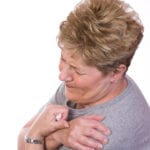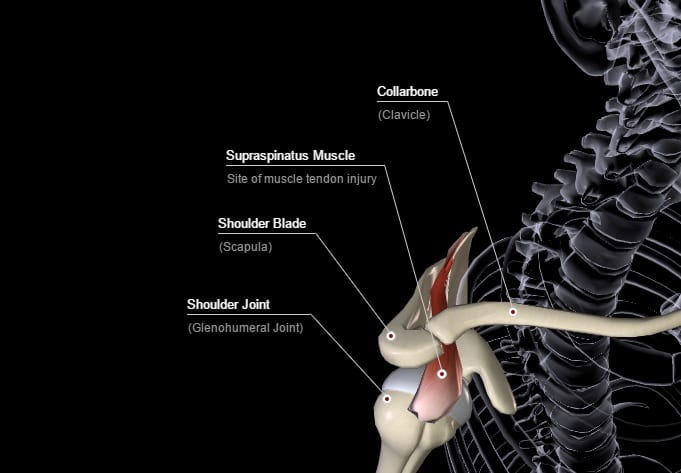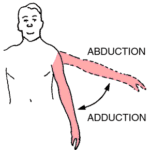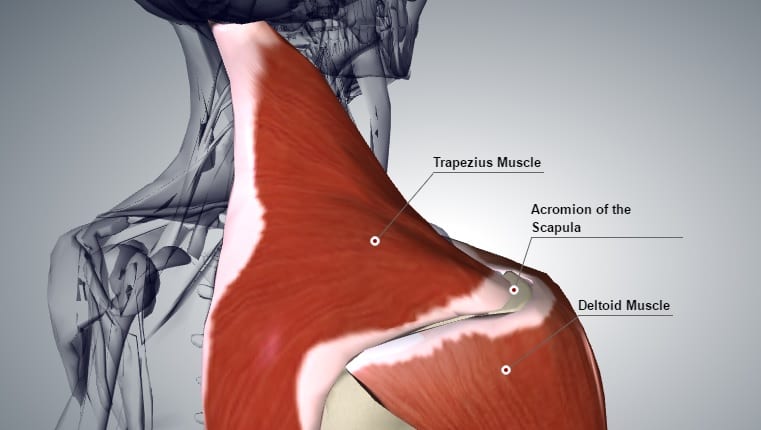Adhesive capsulitis or “frozen shoulder” is an often painful and poorly understood condition. Sufferers are unable to move their arm through a normal range without pain and resistance within the joint.
Most treatments involve movement therapy and plain old waiting for the “frozen” joint to “thaw.” This is of course just a metaphor; the joint is not cold, it’s just stuck.
However, there is hope. A treatment protocol pioneered by Sports Therapist James Waslaski is often able to resolve the condition much sooner than waiting for it to thaw.

I’ll talk about the treatment for frozen shoulder by telling the story of one of my clients, “Tess.”
Tess is a 53-year-old teacher who accidentally fell out of bed one night. Moving her arm gave her sever pain. MRI and ultrasound imaging revealed a 2/3 thickness tear in her supraspinatus tendon.

Unable to move her arm, Tess needed help to dress herself, brush her hair, or do other everyday things. Simple movements often meant compensating with other parts of her body, leading to tired and sore neck and shoulder muscles.
The supraspinatus muscle is the most commonly injured muscle in the rotator cuff — about 80% of cases.1

Due to the severity of her fall, Tess’s shoulder “hitched”, meaning her humerus bone was jammed up into the acromion (bony part of the shoulder). The damage limited her ability to bring her arm out sideways from her body, a movement called “abduction”.2
Her ability to rotate her humerus internally or externally was also very limited. She could not get past neutral without encountering a hard stop within the shoulder joint, and some pain — signs consistent with frozen shoulder.
Tess had already had five appointments with another manual therapist in Melbourne, who, in Tess’s own words, “brought her to tears” with the pain of that treatment. Tess decided to stop the treatment rather than endure the pain.
Tess finally found me via well-known international instructor, Mr James Waslaski. I happened to be attending one of Mr Waslaski’s 5-day workshops in Melbourne when Tess was referred to see him. Mr Waslaski is renowned for being able to release most cases of frozen shoulder in less than an hour.
However, Mr Waslaski was only able to improve Tess’s range of motion a little, this time. He commented that how Tess’s was one of the most advanced cases of frozen shoulder he had seen in over 20 years of practice.
Since Mr Waslaski was about to return to the US, he looked at me and said, “she is your client now.”
Tess finally opted to go for a surgical procedure called hydrodilatation, along with a manipulation under general anaesthetic.
Following the procedure her range in external rotation increased about 40%, and in abduction about 50%. However there was still pain within the joint at the end of those movements, and internal rotation was still limited to about 40°. Hard, bone-on-bone-like stops were found at those points.
Tess continues to see me once a week. After three further pain-free treatments she has achieved about 90% of normal external rotation; and about 75% of normal abduction.
Treatment involved a combination of strain-counterstrain technique,3 positional release therapy,4 and soft tissue massage. This is often deep yet gentle work.
We are now working to reactivate her under-active muscles and calm down the over-active muscles which have not been working properly for nearly six months.

In her most recent treatment Tess appeared to have turned a corner — testing shows a healthy supraspinatus muscle, with far less hitching more space beneath the acromion.
What remains is re-balancing the strength and coordination of the muscles, especially the upper trapezius and deltoid; and helping with the final stages of healing of the shoulder joint capsule.
Between treatments Tess is diligent to the point of religious fervour with her stretches and exercises, which helps her to maintain the gains we achieve in treatment.
Our goal is to return full and pain-free function to Tess’s shoulder.
1. Gomoll, et al. 2004. Rotator Cuff Disorders: Recognition and Management Among Patients With Shoulder Pain. http://onlinelibrary.wiley.com/doi/10.1002/art.20668/pdf
2. Asher, 2018. Rotator Cuff Injuries. http://www.rotatorcuffshoulder.com/rotator_cuff_injuries_rc.php
3. Ck, Wong (2012). Strain counterstrain: current concepts and clinical evidence. – PubMed – NCBI. Ncbi.nlm.nih.gov. Retrieved from http://www.ncbi.nlm.nih.gov/pubmed/22030379
4. Positional Release Therapy Institute (2015). Patient Information at Positional Release Therapy Institute. Prt-i.com. Retrieved from http://prt-i.com/patients
